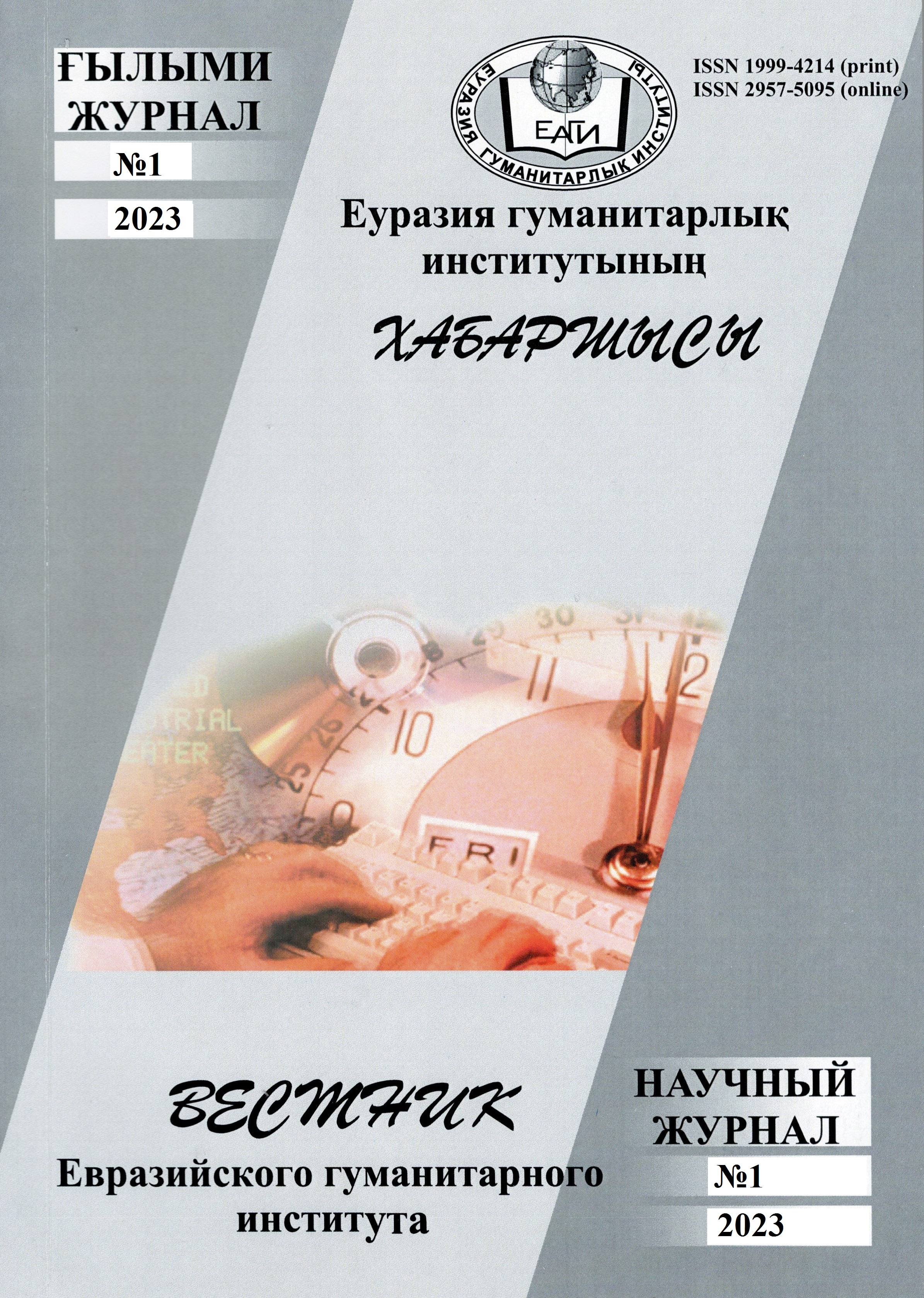THE CATEGORY OF MODALITY IN THE INTERPRETATION OF THE SCIENTIST K.MAMADIL
Keywords:
Modal words, category of modality, modal structure, modal composition, modal meaning, modal models, impersonal sentenceAbstract
The article is based on the dissemination of scientific views on the category of modality in Kazakh linguistics. The author, differentiating the work of the scientist K. Mamadil, offers a different look at the nature of the topic termination. The article proposes to consider modal units, the most recognized morphological category, on the other side of linguistics. This is the lexical character of modal words. Here the emphasis is not only on the obligatory, predictable tone of modality, but also on the nature of their homonymization, synonymization. Secondly, the modal category is indicated as the main tool for creating an impersonal sentence type. Therefore, its syntactically character is revealed. Thirdly, it is argued that the scientific and theoretical proposals formed by the scientist K. Mamadil regarding the composition, structure and models of the modal structure of the verb can also be used in the recognition of other units of the language. This corresponds to the linguo-mathematical principles of the scientist's theme, and are recognized as the main ways of its implementation.
All these designations were decided on the basis of the findings of Kazakh, Russian, German scientists. And he is responsible for the nature of the learning of contactology. In particular, such a principle affects the internal, external relationship of science, more precisely, morphosyntactic, lexico-syntactic and lingua-mathematical.
In conclusion, it should be noted that the compositional-structural models proposed by K. Mamdil have priority in determining the functions of a constrained combination and a contact combination, which are already recognized as a syntactic unit. Indeed, although such scientific statements have a qualitative consistency in the field of phonetics and morphology of Kazakh linguistics, it is not possible to find the necessary conclusions from syntactic differences.
Also, the homonymous and synonymous reasoning proposed by K. Mamadil opens the way to revealing the contactological nature of linguistics. It is clear that this feature underlies lexico-syntactic relations in the field of linguistics and will be an indispensable model for the main measurements of future research.


